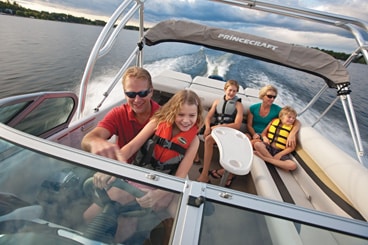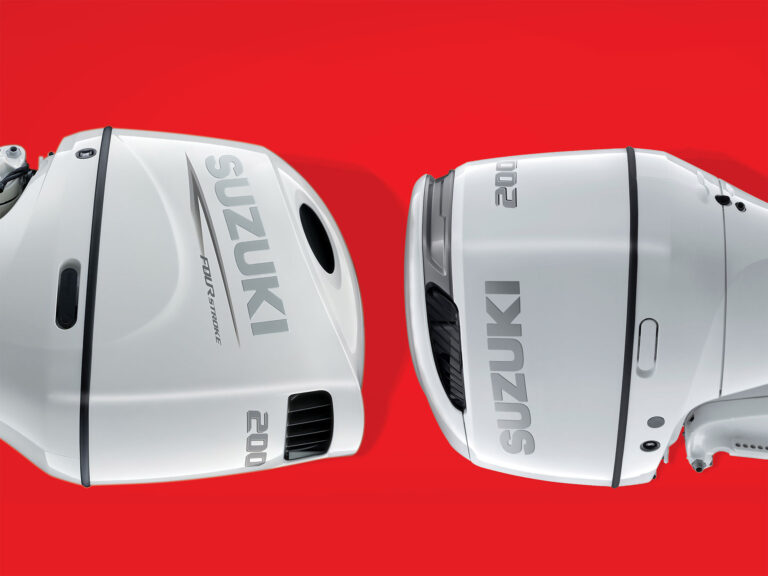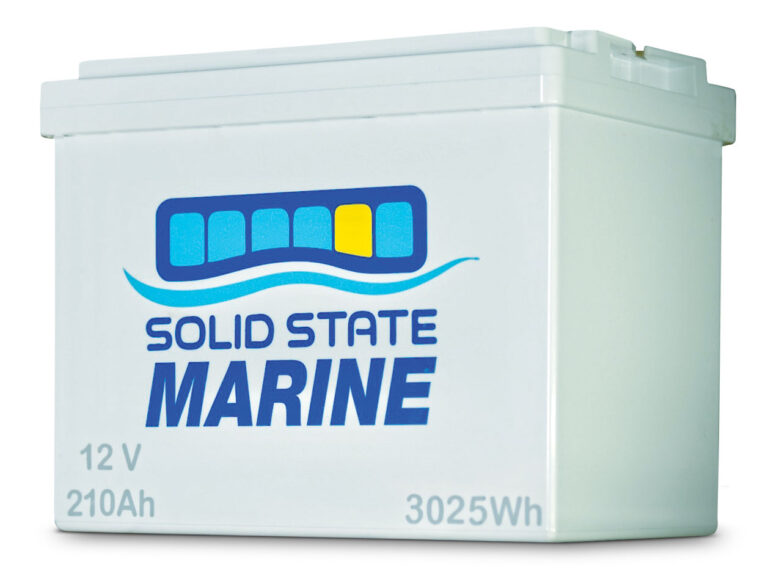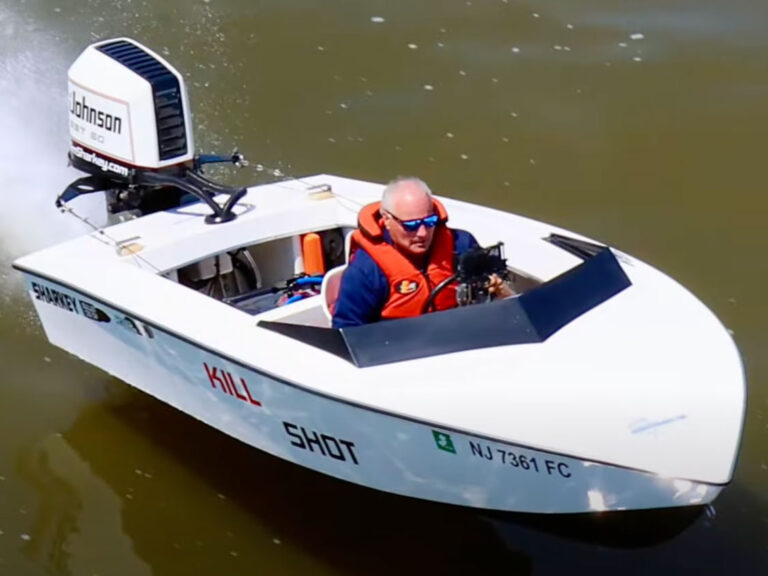Go ahead and groan if this sounds familiar: Having hauled the family to the lake, you’re waiting in line at the ramp when the kids jump out of the car and head in different directions, leaving you to launch the boat solo and schlep all of your gear. As you amble to the dock carrying a ski, three towels, a cooler and two life vests, you spy one of your kids swimming in the water and another bouncing like Tigger in street shoes on the bow of your beloved craft.
What’s wrong with this picture? For starters, it’s exhausting for Mom and Dad. What’s worse, the kids in scenarios like this one aren’t on their way to becoming safe, responsible boaters. They’re passengers, not participants.

Mark Granger has charted a more-active-crew course. The Eagle Scout and lifelong boater grew up in charge of multiple tasks at his family’s cabin on Norris Lake in northeast Tennessee. So, when he and his wife Carole started their own family, they delegated age-appropriate duties early on.
“Even as toddlers, kids can learn how to carry small gear and help as spotters when you’re pulling skiers or tubers,” Mark says. “If babies can learn sign language, little kids can learn the hand signals for ‘faster,’ ‘slower’ or ‘home.'”
Now that the Granger kids are older — Kristi is 14, Amanda 12 and Andrew 10 — they tackle more-complex jobs like securing all the gear on the boat, helping to guide it on and off the trailer, and tying off lines at the dock. What might seem surprising is how happily they embrace their duties.
“It’s not hard, it’s just part of going out on the boat,” says Kristi.
Such a high-engagement approach to family boating is music to Cecilia Duer’s ears. As director of the National Water Safety Congress and its Spirit of America youth-boating program, she’s helped thousands of children become safe boaters. The best motivation, she says, is autonomy.
“They don’t always know how to express it, but the main reason kids in our program are drawn to boating is independence; they want to do things by themselves,” Duer says. “They get to be responsible for something big and important — like rescuing someone, as two of our 7th-grade boys did in a boat last summer — and it builds their confidence.”
The dozen or so kids we interviewed seemed to affirm Duer’s assertion when asked, “What do you love most about boating?”
“Driving,” said 9-year-old Joseph. Every youngster we talked with said the same thing as Joseph, in one form or another (“having the controls,” “using the throttle,” “pulling Dad on a ski”).
“You can drive a boat before you can drive a car or motorcycle or four-wheeler,” says Keith Ammons, aka “The Boating Guy” at the National Marine Manufacturers Association, “and trust me, that’s a big deal when you’re 12, 13 or 14.”
One early lesson for kids is that safe boating extends beyond the driver’s seat. The following fun ideas will groom them, keep them occupied and give you some valuable assistance every time out.
Float-Plan Coordinator
Where are we headed, and what time will we be back? Involve a youngster in helping to set and communicate your float plan. (Template plans are available online; we suggest boatharbors.com.) Equip junior with a clipboard — maybe even a personalized one — and have him fill out the plan (you check it, of course). Let him help you file a copy with a friend, relative or neighbor, and then alert the contact once you’ve returned safely.
Safety Inspector
Do we have emergency flares, life jackets, a fire extinguisher, a first-aid kit and a paddle? Are the lights A-OK? (“One of our kids always has the job of running a light check before we leave the dock in the evening,” says Mark Granger.) Do we have enough docklines? This is a job that might even remind the adults of the safety checklist you’ve been meaning to create, but haven’t.
Hazard Spotter
This job can involve one of the kids’ favorite gadgets: a pair of binoculars. The spotter scans the water and shoreline to pick out marker numbers, buoys, boat traffic, debris, beacons and other landmarks. Visit a site such as fish4fun.com, and help them learn what each buoy/marker signifies. (Example: A “nun buoy” marks the left side of the channel leaving a harbor; it’s red with even numbers.)
Weather Watcher
Unless you’ve got Al Roker on speed dial, deputize a child to help check current and expected weather conditions via the NOAA broadcast on the VHF radio. Consider having them print a forecast from weather.com before the trip, and then to watch the sky for danger signs once you’ve embarked.
Key Patrol
This role is critical when you stop for a swim, and most adults don’t know to do it. Make sure the key is out of the ignition so nobody starts it while swimmers are in the water. We like the idea of hanging the key on a hook near the transom. That way, when the driver is ready to start the motor, he or she will be prompted to check the water for swimmers before firing up. Hanging the key near the walkthrough in the cockpit makes it easier to check the water behind the boat.
Radio Operator
School one of the kids in radio language and proper channels so they’ll understand how to communicate with authorities over the airwaves. The operator also helps you check to be sure the radio is operational before each excursion.
Gear Captain
Once the kids get a look at the boat being uncovered at the dock, they’ll be all over it like sugar ants. Stowing the gear is a great way to keep them in one place while you get yourself situated. It will also give them a greater understanding of supply versus space. (So that’s why we can’t all bring four pairs of shoes.) Teaching this skill will pay dividends in time management for you after a few excursions.
Hoser
OK, maybe there’s a more-dignified job title for this, but what kid doesn’t like to control the water hose for rinsing the boat? Even more fun for younger children, suggests Keith Ammons: Present the hoser with his or her very own super soaker/water cannon to do the job. With that in hand, who wouldn’t want to be a hoser?
Dock Master
As you head in and approach the dock, one child prepares a bow line, another a stern line. With all crew members on the boat, each specialist sets up the looped end on the boat cleats and holds the lines with both hands until the vessel is where you want it at the dock. Make sure they don’t stand up or reach over the gunwale until you say it’s safe to do so; this will keep them from moving around the boat during docking and teach them the basics of using docklines.









